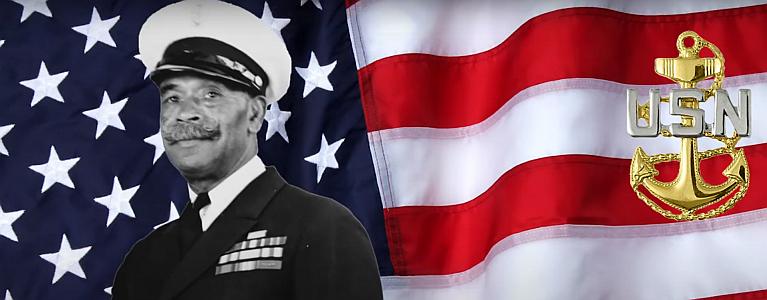 An updated repost in honor of Black History Month.
An updated repost in honor of Black History Month.
John Henry Turpin was one of the first Black Chief Petty Officers to serve in the United States Navy. He was also a survivor of two naval disasters — the catastrophic explosions of the USS Maine in 1898, and USS Bennington in 1905. He was one of 12 sailors nominated for the Medal of Honor for their efforts in rescuing their fellow crew members on the Bennington.
Turpin was born in Long Branch, NJ in 1876. He enlisted in the Navy at age 20, as a messman, one of the only positions available to Black sailors at the time.
Almost two years later, on February 15, 1898, Turpin was serving in the mess hall of the USS Maine at anchor in Havana Harbor, Cuba when it mysteriously blew up. He was picked up from the waters of the harbor along with 89 other crew members. They were the only survivors of the explosion out of 350 total crew.
In 1905, Turpin had been assigned to the gunboat Bennington. When that ship was raising steam for a departure from San Diego, California, on July 21, 1905, she suffered a boiler explosion that killed 66 of the 102 men aboard.
Turpin was one of 12 sailors nominated for the Medal of Honor for valor in attempting to rescue members of the ship’s crew. Turpin was personally credited with saving the lives of 3 officers and 12 enlisted men during that effort. Nevertheless, while all 11 white sailors nominated were awarded the Medal of Honor, Turpin was not. It appears that he was not awarded any medal for his actions that day.
In 1915, Turpin worked as a diver in efforts to raise the sunken submarine USS F-4 in Honolulu, Hawaii. He became qualified as a Master Diver – probably the first African-American sailor to do so. Turpin was also credited with being involved with the development of the underwater cutting torch.
Turpin left active duty in 1916, only to be recalled when the US entered World War I. On June 1, 1917, he became a Chief Gunner’s Mate on the cruiser Marblehead, which made him among the first African-American Chief Petty Officers in the U.S. Navy. Turpin served at that rank until he was transferred to the Fleet Reserve in March 1919. In October 1925, Turpin retired at the rank of Chief Gunner’s Mate.
During his time in the Navy, he was the Navy boxing champion in several different weight classifications and was a boxing instructor at the United States Naval Academy in Annapolis, Maryland.
After his retirement from the Navy, Turpin was employed as a Master Rigger at the Puget Sound Navy Yard in Bremerton, Washington. He was also qualified as a Master Diver in his civilian duties.
During World War II, Turpin tried to return to active service but was denied on account of his age. He volunteered to tour Navy training facilities and defense plants to make “inspirational visits” to African-American sailors.
Turpin died in Bremerton, Washington on March 10, 1962. He was survived by his wife Faye Alice. His body was cremated and his ashes were buried at sea. There is a cenotaph on his honor at the Ivy Green Cemetery in Bremerton.
Recent efforts to posthumously award the Medal of Honor that Turpin for his valor on the Bennington in 1905 failed because too much time had passed and there were no living eyewitnesses to corroborate the events. Instead, the United States Congress in December 2020, renamed the United States Post Office in Bremerton, WA, after John Henry Turpin.
Turpin’s military awards include the Navy Expeditionary Medal, the Spanish Campaign Medal, the China Relief Campaign Medal, the Nicaragua Campaign Medal, the Mexican Service Medal, the WWI Victory Medal, and the Good Conduct Medal.
Thanks to David Rye for contributing to this post.

Thank you for a very good recounting of CPO Turpin’s service to our nation.
It is a minor point, but the China Relief Campaign Medal mentioned above was awarded by the U.S. Army for service during the Boxer Rebellion. It is unlikely Turpin received a U.S. Army medal while serving in the U.S. Navy.
The similarly designated China Relief Expedition Medal was awarded to U.S. Navy and U.S. Marine personnel for service in the 1900-1901 China Relief Expedition during the Boxer Rebellion. A service member was required to perform duty within the borders of China as part of the China Relief Expedition between May 24, 1900 and May 17, 1901 to be eligible.
It is noteworthy mainly because U.S. Census records show Turpin as stateside in San Diego in 1900. Some historians have claimed the Census record as evidence Turpin did not serve abroad during the Boxer Rebellion. A U.S. Navy China Relief Expedition Medal award would tend to belie that conclusion.
Thanks for the background and clarification.